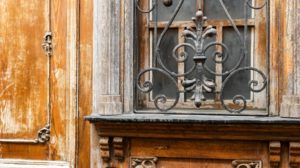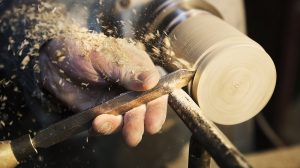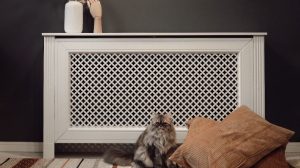There are situations where, in order to prepare the wood before application finishing materials additional operations are required, besides white grinding. This is the case for wood with unsightly staining or stains, either with resin stains, glue stains from veneering or other previous operations. But also situations where the wood is naturally dark in colour and the technology requires a very light, almost white surface. In all these cases, the wood must be bleached and bleached.
How to remove stains on wood
In wood with a high tannin content, stains may appear on contact with metals and can be removed by washing with weak solutions of organic acids (citric, oxalic) followed by washing with warm water.
Resin or adhesive stains can be removed by brushing with hot weak alkaline solutions, then neutralising the surface with 5% acetic acid (vinegar). Resin stains can also be removed by washing with organic solvents.
In the case of glue stains cannot be removed because adhesives become insoluble after curing. In addition, in places where there are glue penetrations, the absorbency of the wood decreases. As a result, the subsequent staining of the wood will be uneven, with light-coloured stains in those areas, and the primer will have poor adhesion to the substrate.
Wood discoloration
Chemicals are used to bleach the wood:
- not destroy the structure of the wood
- act in the shortest possible time
- do not leave insoluble substances on the surface
The most commonly used is a mixture of perhydrol and an ammonia solution. Both are volatile substances that leave no residue after use. As they are also corrosive at the same time, they must be used with great care and protective materials.
Discolouration is very rarely achieved in a single step, and sometimes several consecutive wetting steps are needed to achieve the desired result. And after staining, the wood should be left for 48 hours before finishing.
Discoloration and bleaching of wood is most common in beech, cherry and oak.
How to bleach wood that has a darker natural colour
Bleaching is a very strong discolouration which results in almost white surfaces. It is common to use the same substances mixed together as for bleaching, but in different percentages and with the addition of white pigmented paste.
Maple wood, birch and plop are among the essences subject to this process.
Remnants of bleaching materials sometimes influence the subsequent finish by changing its colour. For this reason the supplier of the finishing materials should be informed for an appropriate recommendation of the materials needed for the next steps.
I hope you find the information useful. As usual, additions are welcome. And if you have any questions or queries, please leave them in the space below. I'm sure I'll reply.



























Hello,
I work in a factory producing solid oak furniture as a Quality Manager. We have a problem with wood discolouration in situations where we want to even out the colour on a panel: discoloured areas turn yellow after finishing;
We only bleach with perhydrol solution; we would also like to try the perhydrol and ammonia mixture you mentioned but we don't know the concentrations of the components;
Can you help us solve this problem? (What are the concentrations of perhydrol and ammonia and how is the mixing done, i.e. which solution is poured over the other).
Thanks in advance.
Sincerely,
Viorica Dumitrescu
Hello,
Yellowing after bleaching is caused by the finishing materials used on top.
You can also bleach with perhydrol and ammonia, but it is much more dangerous and the wood must be washed thoroughly after bleaching. And if it is not well washed the yellowing will be even more pronounced. I will give you a more detailed answer by email.
All the best,
Mihaela Radu
Hello.
Please help me with some information about an oak parquet.
I want to dye it white but still to show the fiber. I tried with a white bath but it did not open enough and remained a yellowish color.
Please contact me by email.
Hello, I am a technical veneer manufacturer, my question is .... how do I decolorize veneer sheet? if I use ammonia do the colored stripes come out ?
Good evening!
You have in the link below some methods of bleaching. There is also bleaching with perhydrol and ammonia.
All the best!
https://revistadinlemn.ro/2017/04/19/albirea-si-decolorarea-lemnului-dupa-indepartarea-vechiului-finisaj/
Don't forget to subscribe to the printed Wood Magazine! For only 58 lei/year you can find out news in the field, discover craft ideas or trade secrets. We remind you that the content in the printed magazine is different from the one on the website. Details in the link below.
Thank you!
https://revistadinlemn.ro/product/abonament-revista-din-lemn/
Hello, we are one of the largest online solid biofuel stores http://www.bio-combustibil.ro.
We are looking for manufacturers who want to sell their products (briquettes, pellets) through us.